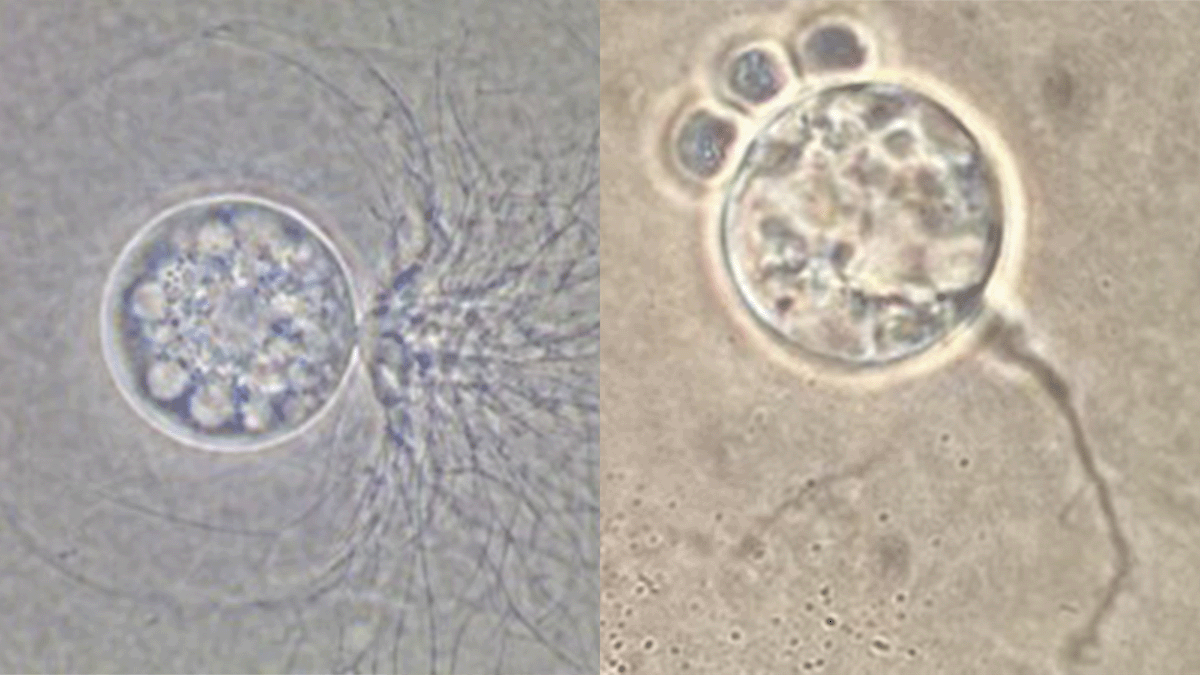
Biodiversity Beneath the Surface: Étaín Cullen’s Exploration of Chytrids and Thraustochytrids
By Camryn Sudimick, Writing Intern
Amid Maine’s watersheds reside countless microorganisms that many do not take the time to consider. These organisms, while small in size, play a crucial role in their ecosystems. Scientists have harnessed the power of environmental DNA (eDNA) when it comes to understanding the world of microscopic organisms.
Étaín Cullen, an undergraduate botany major at the University of Maine (UMaine), explores the capabilities of eDNA technology as part of the NSF EPSCoR RII Track-1 Maine-eDNA project. Cullen also serves on the Maine-DNA Diversity, Equity and Inclusion Advisory Committee. Collaborating with the Maine Chytrid Lab, under the supervision of Peter Avis (Maine-eDNA undergraduate coordinator), Erin Grey (UMaine School of Biology and Ecology assistant professor of aquatic genetics), and Joyce Longcore (UMaine School of Biology and Ecology associate research professor), Cullen’s research offers a fascinating glimpse into the biodiversity of aquatic organisms in Maine’s watersheds.
Among these aquatic organisms are chytrids and thraustochytrids. Chytrids, fungi that inhabit freshwater environments, and thraustochytrids, protists associated with marine habitats, play pivotal roles in their respective ecosystems. They act as decomposers, returning nutrients to aquatic carbon sinks over time. Despite their ecological importance, these organisms are not widely understood. “There is so much that people want to use them for, but they don’t really know what they do or how they’re related to each other,” Cullen emphasized.
One known use of thraustochytrids is in the production of omega-3 fatty acids, which are used, for example, in dietary supplements. This has led some to see potential for other uses in these organisms. “Not knowing much about them could be detrimental or prevent us from using them to their fullest potential,” expressed Cullen.
It is important to understand these organisms broadly. “A lot of thraustochytrid [species] can be easily cultured and investigated but a lot of research is only focusing on the small few that produce the fatty acids that they want without looking at the larger picture more or less,” explained Cullen. She described how chytrids are experiencing a similar phenomenon, where research has been heavily focused on the one species that is killing off frog populations, before taking a step back to investigate chytrids in general and how they work.
“Learning more about what they do and how they work in general could help with further applications to benefit the environment as a whole.” Her findings have the potential to help address pressing issues such as algal blooms, where these organisms could play an important role as parasites that counteract the harmful algae population. Furthermore, she described how thraustochytrids are a known parasite to hard shell clams in Canada and the New England area in the past.
In this study, water samples were collected from Maine-eDNA’s Index Sites across the state, ranging from freshwater to estuarine and marine sites. Then, Cullen combined culturing and eDNA metabarcoding to identify and classify the organisms. Using this data, Cullen is also able to estimate ecosystem biodiversity.
Her preliminary data suggests that the metabarcoding technique is effective in detecting chytrids and thraustochytrids. She has successfully cultured and classified organisms from these samples, constructing a phylogenetic tree that showcases the intricate relationships among chytrids and thraustochytrids.
Before working with Maine-eDNA, Cullen had little knowledge of the potential and capabilities of this emerging technology. Projects like this, “Really show how far we’ve come,” said Cullen. She has learned just how versatile eDNA is. “eDNA can be used for a lot of different things that I didn’t even think were really possible.” Looking forward, Cullen plans to continue her research, further developing the phylogenetic tree and expanding her knowledge of these aquatic organisms.
